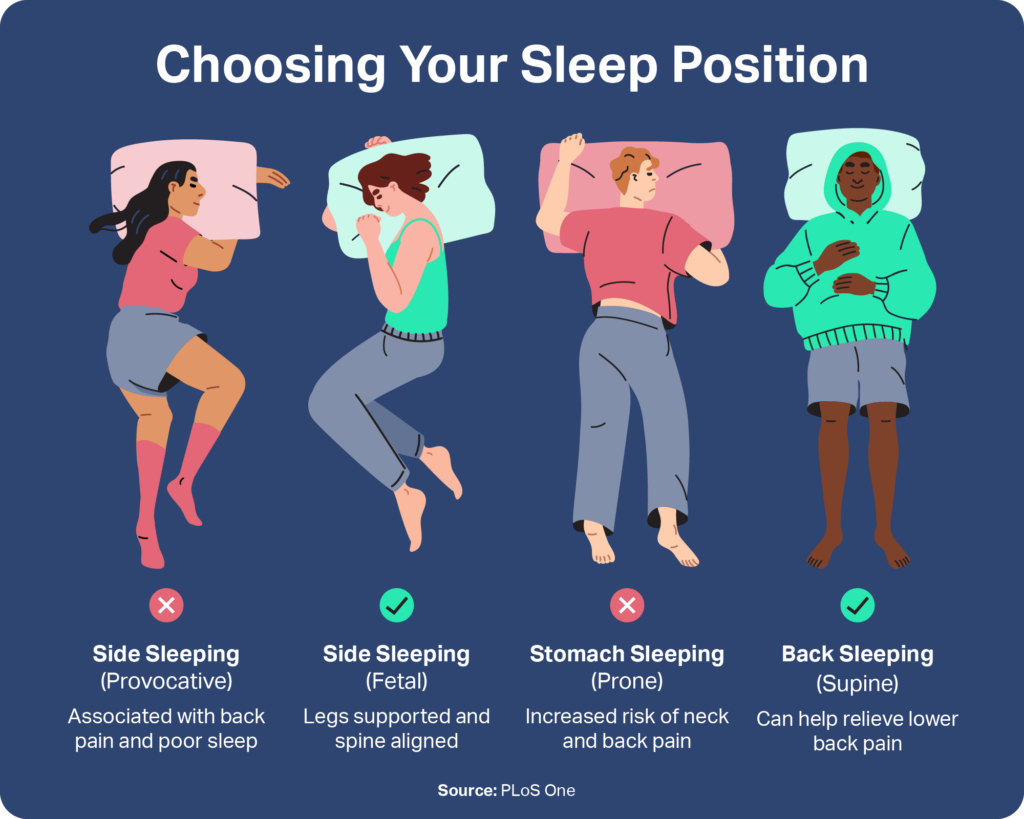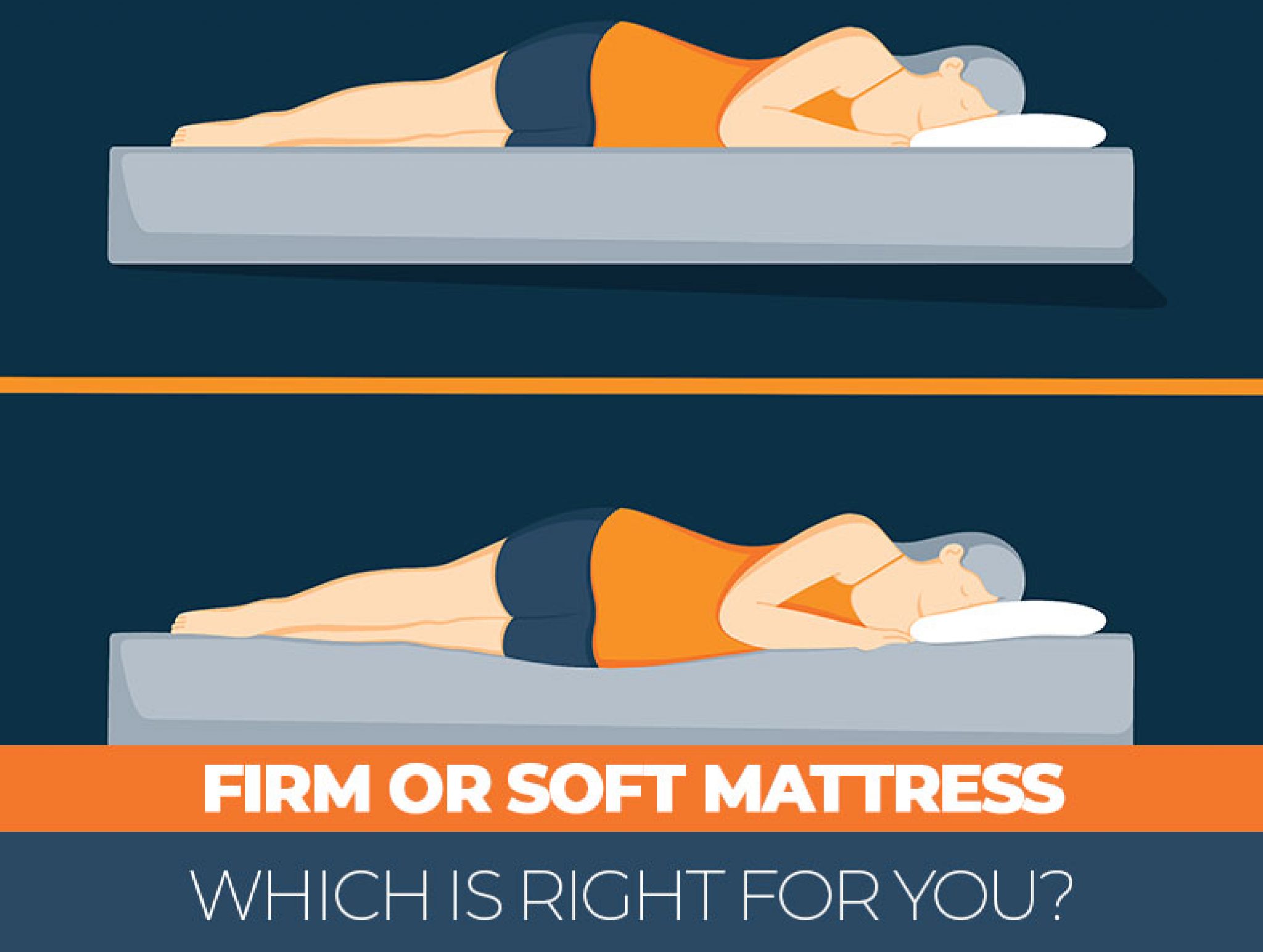Having good posture is important for overall health and well-being. And believe it or not, your sleeping position plays a crucial role in maintaining good posture. The right sleeping position can help alleviate pain and discomfort, improve circulation, and prevent muscle strain and tension. So, what are the best sleeping positions for good posture? The most recommended sleeping position for good posture is on your back. This allows your spine to stay in a neutral position and supports the natural curves of your body. If you are a side sleeper, make sure to keep your spine straight by placing a pillow between your knees. Avoid sleeping on your stomach as it can put pressure on your neck and back, causing strain and discomfort.1. The Best Sleeping Positions for Good Posture
Aside from your sleeping position, your mattress also plays a significant role in maintaining good posture. A supportive and comfortable mattress can help keep your spine aligned and prevent any unnecessary pressure on your joints and muscles. When shopping for a new mattress, look for one that is medium-firm. This provides enough support for your body while also being comfortable. If you are a side sleeper, consider a slightly softer mattress to cushion your shoulders and hips. And if you sleep on your back, a firmer mattress will keep your spine in a neutral position. Avoid mattresses that are too soft or too firm, as they can cause discomfort and disrupt your sleep.2. How to Choose the Right Mattress for Good Posture
It may not seem obvious, but your sleeping position can have a significant impact on your posture. Sleeping on your back helps keep your spine aligned, while sleeping on your stomach can cause strain and tension in your neck and back. When your spine is in a neutral position, it allows your muscles and joints to relax and heal, promoting good posture. Additionally, sleeping on your side can also affect your posture. If you sleep on your side without proper support, it can lead to misalignment of your spine and shoulders, causing discomfort and pain. Therefore, it is essential to choose the right sleeping position to maintain good posture.3. The Link Between Sleeping Position and Posture
Aside from choosing the right sleeping position and mattress, there are other things you can do to maintain good posture while sleeping. First, make sure your pillow and mattress are aligned. Your pillow should support your head and neck, while your mattress should support your body. Also, avoid using too many pillows, as this can cause strain on your neck and shoulders. Another tip is to avoid sleeping in awkward positions, such as with your arm under your head or your legs crossed. These positions can cause unnecessary strain on your muscles and joints, leading to discomfort and poor posture. Lastly, try to maintain a straight posture while sleeping and avoid tucking your chin into your chest, as this can cause strain on your neck and upper back.4. Tips for Maintaining Good Posture While Sleeping
As mentioned earlier, sleeping on your back is the most recommended position for good posture. This is because it helps keep your spine in a neutral position, which allows your muscles and joints to relax and heal. But aside from that, sleeping on your back also has other benefits. Sleeping on your back can help reduce acid reflux, as it keeps your head elevated and prevents the contents of your stomach from traveling back up your esophagus. It can also improve circulation, as it allows your body to distribute blood and oxygen more efficiently. Lastly, sleeping on your back can prevent wrinkles on your face, as it reduces pressure on your skin.5. The Benefits of Sleeping on Your Back for Posture
While sleeping on your stomach may feel comfortable, it is not recommended for good posture. This position puts unnecessary strain on your neck, back, and shoulders, leading to discomfort and poor posture. It also restricts your breathing and can cause numbness and tingling in your arms and legs. Moreover, sleeping on your stomach can also affect your spine's alignment. It forces your neck to twist to one side, which can lead to neck and shoulder pain. If you are a stomach sleeper, try to transition to a different sleeping position to improve your posture and overall health.6. The Dangers of Sleeping on Your Stomach for Posture
As mentioned earlier, a medium-firm mattress is recommended for good posture. However, the level of firmness may vary depending on your sleeping position and personal preferences. If you are a back sleeper, a firmer mattress will provide better support for your spine. But if you are a side sleeper, a softer mattress can help cushion your shoulders and hips. It is essential to find a balance between support and comfort when choosing a mattress for good posture. A mattress that is too firm can cause discomfort and disrupt your sleep, while a mattress that is too soft may not provide enough support for your body.7. How Firm Should Your Mattress Be for Good Posture?
Aside from your mattress, your pillow also plays a crucial role in maintaining good posture while sleeping. A good pillow should support your head and neck, keeping them in a neutral position. This helps prevent strain and tension in your neck and shoulders, promoting good posture. If you are a side sleeper, choose a pillow that is thick enough to keep your head aligned with your spine. For back sleepers, a flatter pillow is recommended to prevent your head from tilting too far back. And if you sleep on your stomach, consider using a thin pillow or no pillow at all to avoid straining your neck.8. The Role of Pillows in Maintaining Good Posture While Sleeping
Your sleeping position can also help alleviate certain types of pain and posture issues. For example, if you suffer from lower back pain, sleeping on your back with a pillow under your knees can help relieve pressure on your spine. If you have neck pain, consider sleeping on your back with a pillow under your neck for support. For those with snoring or sleep apnea, sleeping on your side can help keep your airway open and reduce snoring. And if you have acid reflux or heartburn, sleeping on your left side can help prevent stomach acid from traveling back up your esophagus. It is essential to find the best sleeping position for your specific needs to promote good posture and overall health.9. The Best Sleeping Positions for Different Types of Pain and Posture Issues
Lastly, it is essential to regularly replace your mattress to maintain good posture. Over time, mattresses lose their support and can cause discomfort and poor posture. It is recommended to replace your mattress every 7-10 years, depending on its quality and condition. Also, keep in mind that as your body changes, your mattress needs may also change. If you have gained or lost weight, or if you have developed any new health conditions, it may be time to consider a new mattress. Investing in a good quality mattress can greatly benefit your posture and overall well-being.10. The Importance of Regularly Replacing Your Mattress for Good Posture
The Importance of Posture in Sleep and How to Find the Best Sleeping Position and Mattress for Optimal Posture

Why Posture Matters in Sleep
 We often hear about the importance of good posture while sitting or standing, but did you know that your sleep posture also plays a crucial role in maintaining a healthy spine and overall well-being? Poor sleeping positions can not only lead to discomfort and disrupted sleep, but can also contribute to long-term issues such as back pain, neck pain, and headaches. This is why it is essential to find the best sleeping position and mattress for your posture.
We often hear about the importance of good posture while sitting or standing, but did you know that your sleep posture also plays a crucial role in maintaining a healthy spine and overall well-being? Poor sleeping positions can not only lead to discomfort and disrupted sleep, but can also contribute to long-term issues such as back pain, neck pain, and headaches. This is why it is essential to find the best sleeping position and mattress for your posture.
The Best Sleeping Positions for Optimal Posture
 The first step in achieving good posture while sleeping is to find the right position. The most recommended sleeping positions for maintaining proper alignment of the spine are on your back or on your side. Sleeping on your stomach is not recommended as it can cause strain on the neck and spine.
If you prefer sleeping on your back, make sure to use a medium-firm mattress to provide enough support for your spine. Placing a pillow under your knees can also help relieve pressure on your lower back.
For side sleepers, it is important to keep your spine in a neutral position by placing a pillow between your knees. This helps to keep your hips and spine aligned, preventing any strain on your back and hips. A firm or medium-firm mattress is ideal for side sleepers to provide adequate support.
The first step in achieving good posture while sleeping is to find the right position. The most recommended sleeping positions for maintaining proper alignment of the spine are on your back or on your side. Sleeping on your stomach is not recommended as it can cause strain on the neck and spine.
If you prefer sleeping on your back, make sure to use a medium-firm mattress to provide enough support for your spine. Placing a pillow under your knees can also help relieve pressure on your lower back.
For side sleepers, it is important to keep your spine in a neutral position by placing a pillow between your knees. This helps to keep your hips and spine aligned, preventing any strain on your back and hips. A firm or medium-firm mattress is ideal for side sleepers to provide adequate support.
Choosing the Right Mattress for Posture Support
 Finding the right mattress for your body and sleeping position is crucial in maintaining good posture. A mattress that is too soft will cause your body to sink, leading to misalignment of the spine. On the other hand, a mattress that is too firm can put pressure on your joints and cause discomfort.
When shopping for a mattress, look for one that is medium-firm and provides enough support for your spine. Memory foam and latex mattresses are good options as they conform to your body's shape and provide targeted support.
Remember to also replace your mattress every 8-10 years as it loses its support and can negatively impact your posture over time.
Finding the right mattress for your body and sleeping position is crucial in maintaining good posture. A mattress that is too soft will cause your body to sink, leading to misalignment of the spine. On the other hand, a mattress that is too firm can put pressure on your joints and cause discomfort.
When shopping for a mattress, look for one that is medium-firm and provides enough support for your spine. Memory foam and latex mattresses are good options as they conform to your body's shape and provide targeted support.
Remember to also replace your mattress every 8-10 years as it loses its support and can negatively impact your posture over time.
Final Thoughts
 In addition to finding the best sleeping position and mattress for your posture, it is also important to practice good sleep habits. This includes maintaining a consistent sleep schedule, using a supportive pillow for your neck, and avoiding electronics before bedtime.
By prioritizing good posture in your sleep, you can not only improve your overall health and well-being, but also wake up feeling rested and rejuvenated. Invest in a supportive mattress and make adjustments to your sleeping position to achieve optimal posture and enjoy a better quality of sleep.
In addition to finding the best sleeping position and mattress for your posture, it is also important to practice good sleep habits. This includes maintaining a consistent sleep schedule, using a supportive pillow for your neck, and avoiding electronics before bedtime.
By prioritizing good posture in your sleep, you can not only improve your overall health and well-being, but also wake up feeling rested and rejuvenated. Invest in a supportive mattress and make adjustments to your sleeping position to achieve optimal posture and enjoy a better quality of sleep.






































































.png)





























